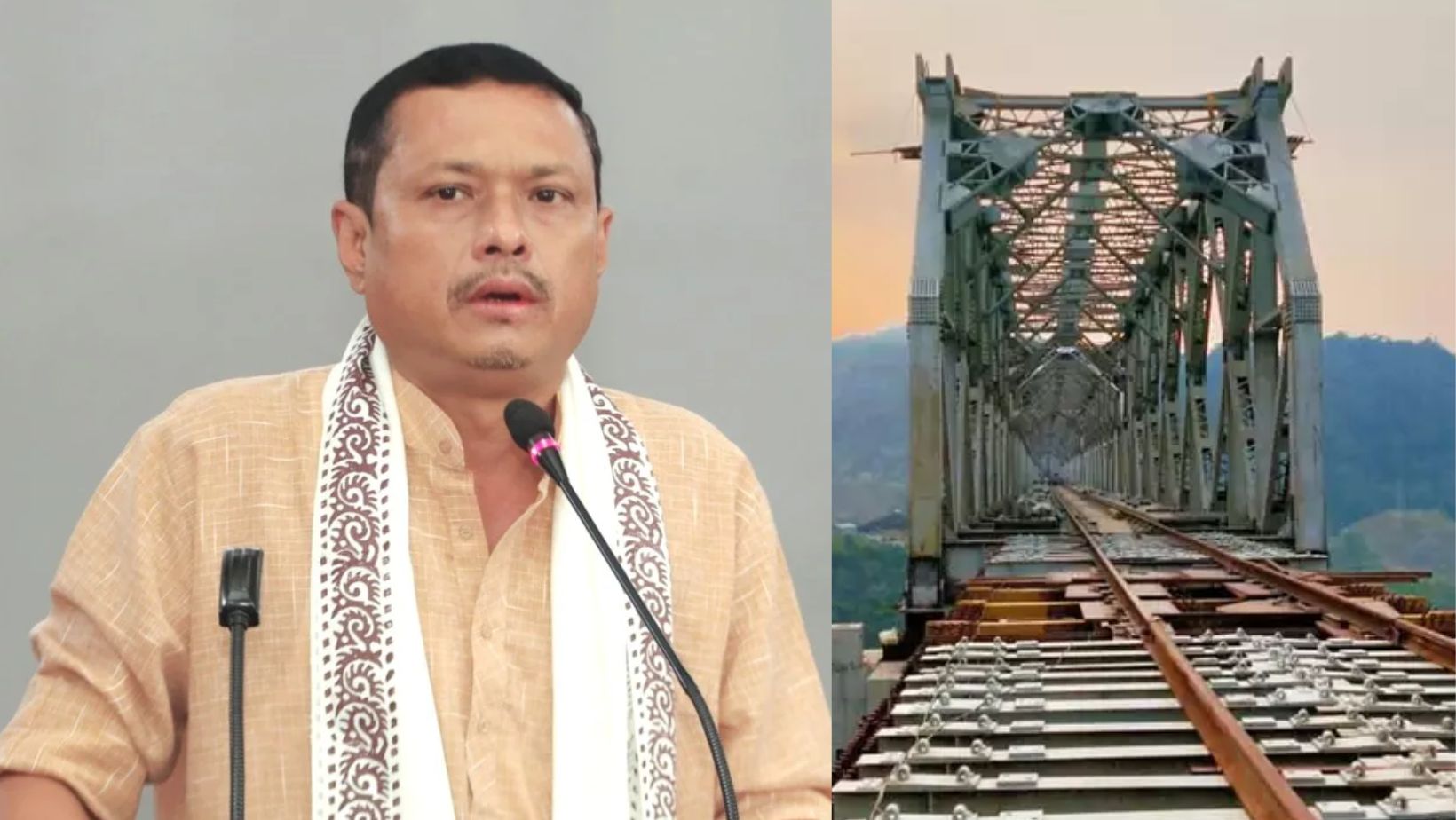Manipur MP Leishemba Sanajaoba Urges Fast-Tracking of the Jiribam–Imphal Railway Project
Rajya Sabha MP Maharaja Leishemba Sanajaoba has asked the Union Government to speed up the Jiribam–Imphal railway by adopting a two-pronged construction strategy — carrying out works simultaneously from both Imphal and Jiribam ends — so the crucial 111-km line can be completed faster and Manipur’s supply and connectivity issues can be resolved sooner. He noted that the Jiribam–Khongsang (55.36 km) section is already commissioned, while the remaining Khongsang–Noney (18.25 km) and Noney–Imphal (37.02 km) stretches are still under construction; the MP warned that without a two-ended push the work could take another two to three years.
The Jiribam–Imphal railway is the Northeast’s equivalent of adding a major new highway — except it’s far more than convenience. For Manipur, a state that depends heavily on a few road arteries and whose supply chains are vulnerable to landslides, seasonal disruptions, and security-related closures, a direct rail link to the national network is a game changer. It reduces freight costs, speeds up movement of essentials, opens markets for local producers, and stabilizes logistics in bad weather.
That’s why a Rajya Sabha MP from Manipur pushing for faster completion isn’t just making a local plea — he’s calling for a structural fix to long-standing economic and connectivity problems. Leishemba’s push for a two-pronged approach aims to compress years of waiting into months of coordinated effort. Let’s break down what that means in plain language — the obstacles, the low-cost fixes, and what a finished rail line could actually deliver for people in markets, farms, and small factories across the state
What the MP actually asked for (and why ‘two-pronged’ is more than jargon)
In the Upper House and in public remarks, MP Leishemba Sanajaoba urged the Centre to adopt a two-pronged construction strategy: instead of building only from the Jiribam side forward, start work in parallel from the Imphal side as well. The logic is straightforward: build from both ends to shorten the time it takes for the middle to be stitched together. This is a classic engineering trick — if you dig a tunnel from one end, it can take ages; dig from both ends and you meet in the middle much sooner.
Why does this matter now? The Jiribam–Khongsang stretch (55.36 km) has been completed and commissioned, but the remaining two segments (Khongsang–Noney and Noney–Imphal) still need finishing; if construction continues at the current pace and only from one side, the MP warned, completion could be delayed by two to three more years. His ask is pragmatic: parallelize work, accelerate approvals, and move machines and manpower into the places where they’re needed.
The current project snapshot: what’s done and what’s left
Here’s how the 111-kilometre corridor divides:
- Jiribam → Vangaichungpao → Khongsang: key portions already completed in phases, and the Jiribam–Khongsang 55.36 km stretch has been commissioned. This opened a portion of the route and proved feasibility in the most rugged terrain
- Khongsang → Noney (≈18.25 km): under construction, still requiring complex tunnelling and bridgework
- Noney → Imphal (≈37.02 km): also under construction — this final leg contains some of the trickiest engineering, including high piers, long viaducts and multiple tunnels that are challenging even for seasoned infrastructure teams.
Five Unique FAQs
Q1: What exactly did MP Leishemba Sanajaoba request in Parliament?
He urged the Union Government to adopt a two-pronged construction strategy for the Jiribam–Imphal railway — i.e., start and sustain construction from both ends simultaneously to accelerate completion.
Q2: Which sections of the 111-km Jiribam–Imphal line are already done?
The Jiribam–Khongsang section (55.36 km) has been completed and commissioned; the Khongsang–Noney (≈18.25 km) and Noney–Imphal (≈37.02 km) stretches remain under construction
Q3: How much time could a two-ended approach realistically save?
Project stakeholders and local leaders suggest that without parallelization the remaining work could take another two to three years; a well-executed two-ended push could compress that timeline substantially, potentially into 12–18 months depending on weather, clearances and resource allocation.
Q4: Are there any recent engineering milestones that suggest the project is progressing?
Yes — Indian Railways’ Northeast Frontier units have reported girder launches and superstructure progress on major bridges (including high-pier structures), indicating steady engineering progress on critical structures.
Q5: What are the main risks if the project is rushed?
The main risks are compromise of construction quality and safety, cost overruns, and community/environmental grievances. Any acceleration must include tight quality controls, independent audits and active community engagement to mitigate these risks.




